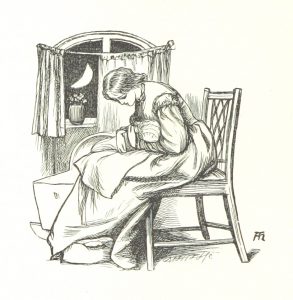
As a child you probably enjoyed singing and dancing to nursery rhymes. While you were having a fun time with friends you were actually learning much more than that. This is just one way to help children boost their language skills. By the constant repetition of the rhyme and the sing-song pattern. This helps lay down the ground work for reading and spelling. Another big thing nursery rhymes do is promote social skills. With many of the rhymes there are games or hand games associated with it. This allows interaction between children, turn taking, and being able to read body language.
Ring Around the Rosies has many theories as to what it is about and when it was written. A lot of people believe that it was written about the Black Plague which occurred during the 16th century. Many people perished during the plague and it is said that this rhyme was written based off of when and how they got rid of those that died in the plague. Some people are not sure it really is about this due to the ashes, ashes line. Cremation was not started until the 20th century, but to get rid of sickness a lot of the time the dead were burned. It is not definite when this rhyme was written or when it started. There have been copies of it in all languages starting in the 17th century, with few various in the 18th century. When doing this rhyme children learn gross motor skills and language skills. It definitely helps children learn spacial awareness by realizing how close they are to others. It also helps with parent/caregiver and child relationship. This is a nursery rhyme that most everyone did when they were younger which helps strengthen the bond with a child when doing it.
Mary, Mary Quite Contrary, was written in 1744 in England. A popular theory to this rhyme is it was written about Queen Mary I. She was often referred to as “Bloody Mary” due to her homicidal tendencies. Contrary can also be way to describe someone who is murderous and a bit crazy. Silver bells and cockle shells are also not flowers but rather items that can be used to kill a person. Queen Mary was a devote Catholic and during her reign she saw to the murder of many Protestants. This nursery rhyme can help with children in many ways. The repetitive sing-song style helps children focus on certain words and help with memory and language. You can also have your own inflection and tone with it to help emphasize other words in it as well. In a classroom you can make flowers and a flower bed in a dramatic play area, and let the children re-enact the rhyme. This will help with imaginative play for all children.
These Rhymes can bring back the childhood memories of your youth. But they help all children learn so many skills. Language, social skills, gross motor and fine motor skills. While you think it might not be benefiting your child to do these or have them in the classroom, rhymes do so much.